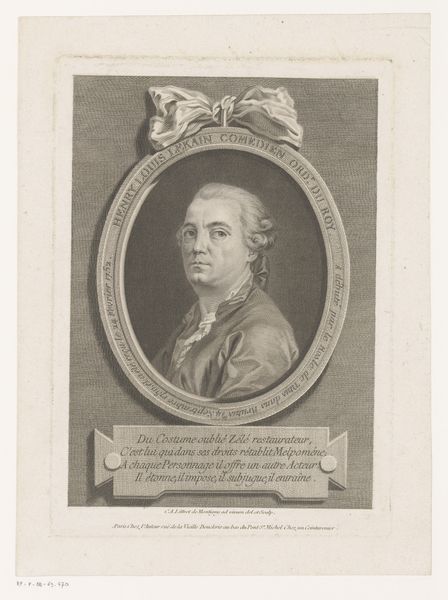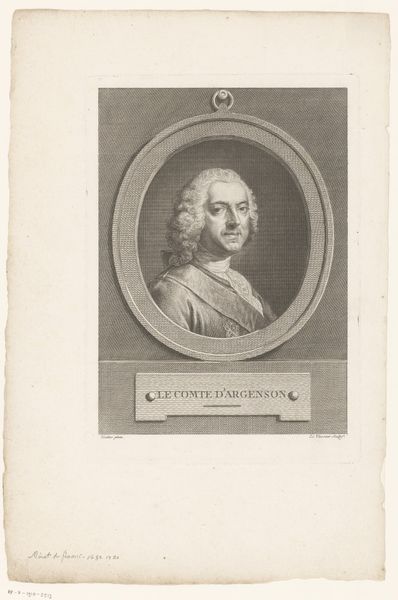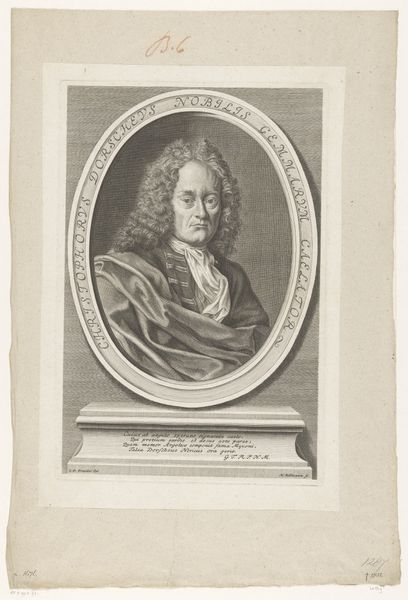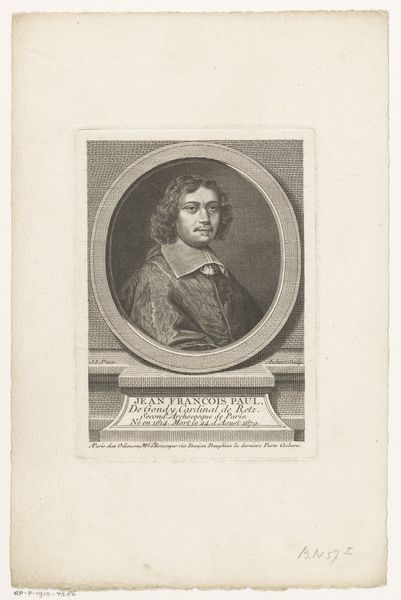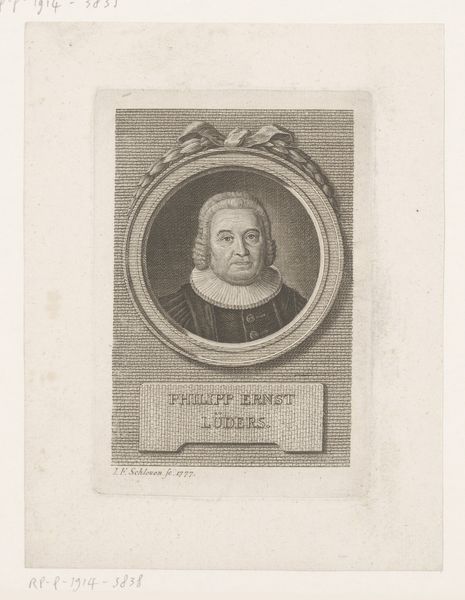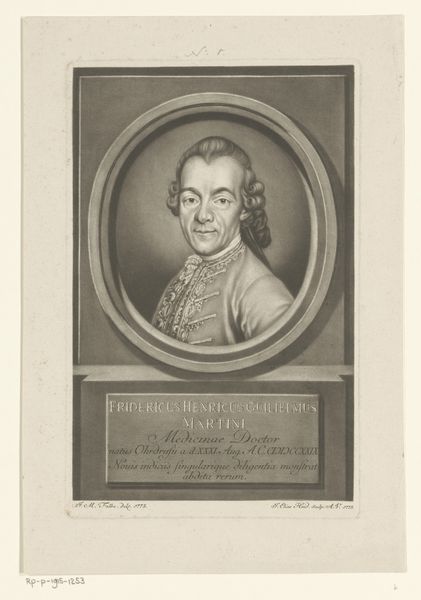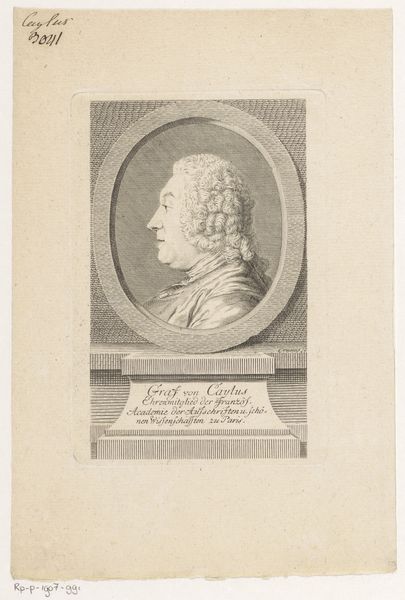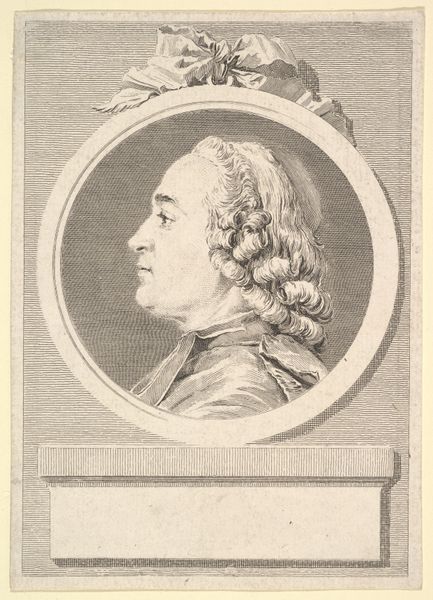
Dimensions: height 178 mm, width 110 mm
Copyright: Rijks Museum: Open Domain
Curator: At first glance, I sense a quiet dignity, a reserve conveyed by the monochrome and the sculpted-frame effect. Editor: You're right; there’s a composed restraint. What are we looking at specifically? Curator: This is an engraving from 1772, entitled "Portret van Friedrich Justus Riedel," created by Georg Christoph Schmidt. Note the fine, precise lines rendered in the engraver's craft. The artwork captures a profile portrait set within an oval cartouche, mounted on what appears to be a small stone plinth. Editor: Interesting. The plinth transforms a simple portrait into an idealized, monumentalized representation of an intellectual. The very stone and framing feel weighted with significance, a need to grant lasting importance to Riedel. How was an engraver's art received then? Curator: In its time, engravings like this were widely circulated. This wasn’t simply a portrait but a symbolic object, speaking to social standing and the visual culture of enlightenment. This era often sought to embody values in very immediate and clear ways. Portraits reinforced status. The gaze, hair, clothing, and setting speak volumes. Editor: It does make one wonder, doesn’t it, about the social circles this print might have moved within, who owned copies, who was familiar with Riedel. It feels part of a project, an act of constructing historical memory and fame, more than simply a likeness. Curator: Precisely. And I suspect that Friedrich Justus Riedel understood his role within this performative act. The slight smile and self-assured bearing feel intentional, calibrated to present a certain image for posterity. The plinth serves not just as support, but as a declaration of lasting significance. Note how even the type used to present Riedel’s name adds to this assertion of dignity. Editor: It also serves to emphasize that constructing public memory is never a neutral process. The artist's and patron's choices subtly mold our perception of Riedel centuries later. It becomes more a symbol than an objective rendering, loaded with aspirations and ideology. Curator: Absolutely. And considering the enduring nature of symbolic acts in cultural expression, these engraved portraits hold more resonance than merely capturing physical resemblance. Editor: Food for thought on how images—even seemingly simple portraits—acquire significance over time, echoing through the halls of history. Curator: Indeed. The play of line and the construction of identity offers layers worth contemplating, a cultural and psychological puzzle, carefully framed.
Comments
No comments
Be the first to comment and join the conversation on the ultimate creative platform.

